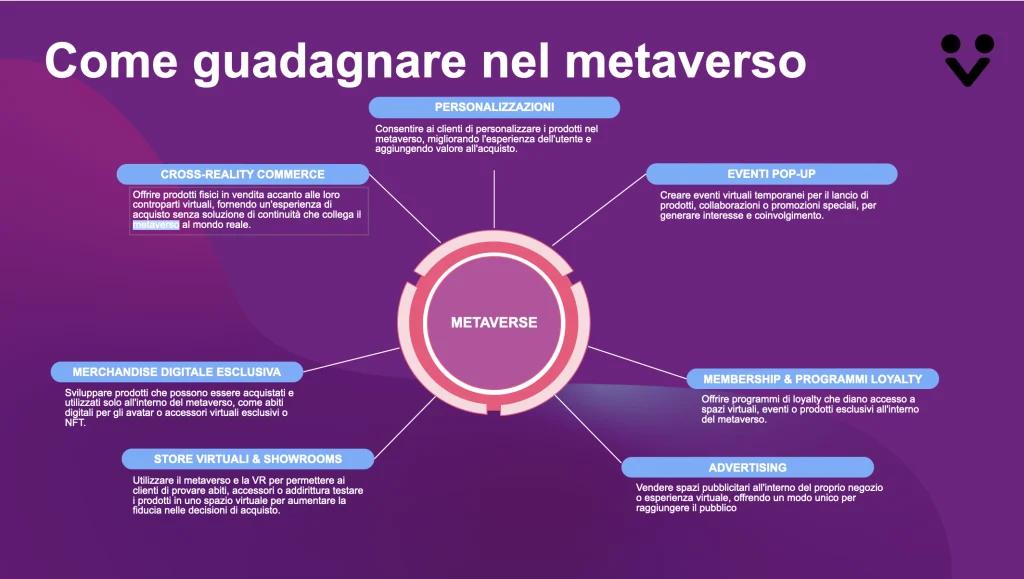. .
BLOG
LFM University: Metaverse and AR masterclass for business

The Metaverse represents one of the most fascinating technological evolutions of the modern era, merging the virtual with the physical aspect of our existence and offering new frontiers for business, entertainment, education and social relations. The Masterclass “ Metaverse and AR for Business,” LFM University’s second major event, held on March 22 and 23, 2024, explored these possibilities, diving into the potential of the Metaverse and Augmented Reality (AR) as revolutionary tools for business. With the guidance of many industry experts, we were able to journey through the technology, exploring how the Metaverse is rewriting the rules of the game in the corporate world and beyond. In this article we retrace some of the highlights of our educational journey.
From the Metaverse Concept to Spatial Computing
The term “Metaverse” finds its roots in science fiction. The birth of the name “Metaverse” marks a turning point in our understanding of digital environments and the fusion of reality and virtuality. This term, which today conjures up images of immersive virtual worlds and cutting-edge technological frontiers, has humble but deeply rooted origins in the cyberpunk culture of the 1990s, finding its first appearance in Neal Stephenson’s science fiction novel “Snow Crash,” published in 1992. Stephenson, through his novel, imagines a dystopian future where individuals, in order to escape the monotony and degradation of the physical world, take refuge in a parallel digital universe called the “Metaverse.” This term is a portmanteau of the words “meta,” meaning beyond, and “universe,” alluding to an entity that transcends known reality to create a new domain of infinite possibilities. In Stephenson’s Metaverse, people’s avatars navigate a 3D virtual environment, interacting with each other, conducting business and having experiences otherwise impossible in the real world.

What might initially have seemed like a pure exercise in literary fantasy has become, with the passage of time and technological advancement, a tangible reality. Developments in virtual reality (VR), augmented reality (AR), and blockchain technologies have made possible the existence of persistent virtual spaces where users can interact in ways that mirror, and sometimes exceed, interactions in the physical world. These advances have transformed the Metaverse from a science fiction concept to a practical goal for technology companies, content creators, and online communities.
In the current context, the Metaverse refers to a collection of connected virtual spaces that create a parallel universe in which people, represented by avatars, can work, play, and socialize. This vision has been embraced and promoted by a number of technology companies, with Mark Zuckerberg, CEO of Facebook (now Meta), publicly acknowledging the Metaverse as the future of the Internet, emphasizing its potential to create more immersive and interactive virtual worlds.

But can the metaverse really be a real business opportunity?
During the course we addressed an important question, namely, “Can you do real business in a virtual world and generate revenue streams?” We addressed this question with several experts in the field, and the answer was yes. So let’s find out in what forms it is possible to generate business in the metaverse.

Basically, creating revenue streams involves creating immersive experiences that combine commerce, personalization and social interaction in ways that are at once new, exciting and convenient for users. Let’s look at some of them.
1. Cross-Reality Commerce
Cross-Reality Commerce represents an innovative intersection of physical and digital commerce. Companies can sell real products and, in parallel, offer their digital versions in the metaverse. This can include, for example, buying a pair of shoes in the real world and receiving a matching pair for the buyer’s avatar in the metaverse. This strategy provides an integrated shopping experience and creates a closer bond between the customer and the brand as customer satisfaction extends from one environment to the other, enhancing brand engagement and loyalty.

Customizations
Personalization in the metaverse allows consumers to express their individuality. Companies can take advantage of this trend by offering customization options for avatar clothing, virtual space decorations, or even the functionality of virtual objects. This level of personalization not only increases perceived value but also encourages greater spending because of the exclusivity and personal relevance of the personalized product.

Pop-Up Events
Virtual pop-up events, such as product launches or brand collaborations, can attract attention and generate significant traffic in the metaverse. They can be used to showcase new collections, artistic collaborations, or to celebrate special occasions, creating an atmosphere of exclusivity and promoting the sale of products or services. Pop-up events can also encourage user participation through immersive experiences that prompt interaction and sharing on social media.

Membership & Programmi Loyalty
By introducing membership and loyalty programs, companies can create a sense of belonging and incentivize repeated visits and interactions in their virtual space. These programs can offer early access to new or limited products, exclusive experiences and virtual rewards that encourage long-term commitment and can be translated into real benefits.
Exclusive Digital Merchandise
The sale of exclusive digital merchandise, such as avatar clothing, game skins, accessories, or NFTs, represents an excellent monetization opportunity in the metaverse. With a relatively low production cost and the ability to attract collectors and fans, this strategy can generate new revenue streams. NFTs, in particular, allow users to hold a single digital item with potential for revaluation over time, which can lead to a vibrant and profitable secondary market.
Virtual store & Showrooms
Virtual stores and showrooms in the metaverse allow consumers to explore and interact with products in a three-dimensional environment. This form of virtual retail can reduce the costs associated with physical spaces, expand a brand’s geographic reach, and provide valuable data on consumer behavior. In addition, the immersive experience can increase engagement and lead to more informed purchasing decisions, reducing returns and increasing customer satisfaction.
Advertising
Finally, advertising in the metaverse offers uncharted territory for creative and engaging campaigns. Advertising spaces within the metaverse can range from virtual billboards to embedded ads that users can discover as they explore virtual worlds. This form of advertising not only reaches an audience in a new and engaging context but can also provide detailed metrics on campaign effectiveness.
Our reflections
Technology is continuing to evolve and with it the generations and the way they interact in society. The various “metaverses to date” are worlds in which millions of people now socialize, play games, and create parallel identities that parallel their virtual ones. The world is already changing, the alpha generation has already developed an extremely technology-soaked sociality in which Roblox is a world not only where they can play games but where they can spend free time with friends. As such, to keep up with the changes, we need to learn the codes of the new world in order to make a connection with these new generations, who will be the consumers of tomorrow.
Recent posts
- All Post
- Area manager
- Best Employee
- Business Intelligence
- Education
- Eventi
- Intelligenza artificiale
- LFM University
- Metaverso
- Points of sales
- Retail
- Sponsorship
- Tour Operator




